 W
WThe Empire style is an early-nineteenth-century design movement in architecture, furniture, other decorative arts, and the visual arts, representing the second phase of Neoclassicism. It flourished between 1800 and 1815 during the Consulate and the First French Empire periods, although its life span lasted until the late-1820s. From France it spread into much of Europe and the United States.
 W
WThe Belfort Synagogue is a synagogue built in the Byzantine Revival architecture during the Second French Empire in the city center of Belfort, France.
 W
WNotre-Dame de l′Assomption is a Catholic parish church in the small town of Bergheim, in the Haut-Rhin department of France. It is classified as a Monument historique since 1985.
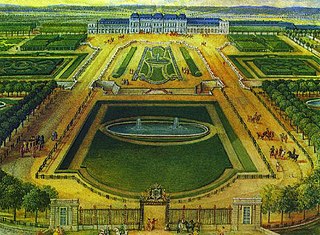 W
WThe Château de Chanteloup was an imposing 18th-century French château with elaborate gardens, compared by some contemporaries to Versailles. It was located in the Loire Valley on the south bank of the River Loire, downstream from the town of Amboise and about 2.3 kilometres (1.4 mi) southwest of the royal Château d'Amboise. From 1761 to 1785 Chanteloup belonged to King Louis XV's prime minister, the Duke of Choiseul. The château was mostly demolished in 1823, but some features of the park remain, notably the Pagoda of Chanteloup, a significant tourist attraction.
 W
WThe Château de Compiègne is a French chateau, a royal residence built for Louis XV and restored by Napoleon. Compiègne was one of three seats of royal government, the others being Versailles and Fontainebleau. It is located in Compiègne in the Oise department and is open to the public.
 W
WCharles-Louis Clérisseau was a French architectural draughtsman, antiquary and artist. He had a role in the genesis of neoclassical architecture during the second half of the 18th century.
 W
WThe Column of the Grande Armée is a 53 metre high Corinthian order triumphal column on the Rue Napoleon in Wimille, near Boulogne-sur-Mer, France.
 W
WMathurin Crucy was a French architect and urban planner, who conceived a major Neo-Classical architectural programme for Nantes.
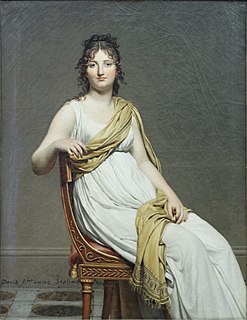 W
WDirectoire style describes a period in the decorative arts, fashion, and especially furniture design concurrent with the post-Revolution French Directory. The style uses Neoclassical architectural forms, minimal carving, planar expanses of highly grained veneers, and applied decorative painting. It is a style transitional between Louis XVI and Empire.
 W
WThe École de Chirurgie is a historic building located at 10–12 rue de l'École de Médecine in the 6th arrondissement of Paris. Today it is the headquarters of the Paris Descartes University.
 W
WAn École des Beaux-Arts is one of a number of influential art schools in France. It is the cradle of Beaux-Arts style in architecture and city planning that thrived in France and the United States during the end of the nineteenth century and the first quarter of the twentieth century. The most famous and oldest École des Beaux-Arts is the École nationale supérieure des Beaux-Arts, now located on the left bank in Paris, across the Seine from the Louvre, at 14 rue Bonaparte. The school has a history spanning more than 350 years, training many of the great artists in Europe. Beaux Arts style was modeled on classical "antiquities", preserving these idealized forms and passing the style on to future generations.
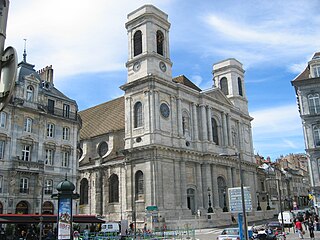 W
WThe église Sainte-Madeleine is a neoclassical 18th century hall church in the Battant district of Besançon, France, dedicated to Saint Mary Magdalene. Antoine-Pierre II de Grammont, the archbishop of Besançon, had it built from 1746 to 1766 to plans by the architect Nicolas Nicole.
 W
WThe Église Saint-Pothin is a Roman Catholic church located in Lyon, France. The parish church sits on the left bank of the Rhône, in the 6th arrondissement of Lyon, at the Place Edgar Quinet. By order of 2 May 2007, the whole church was included in the supplementary inventory of monuments historiques.
 W
WPierre-François-Léonard Fontaine was a neoclassical French architect, interior decorator and designer.
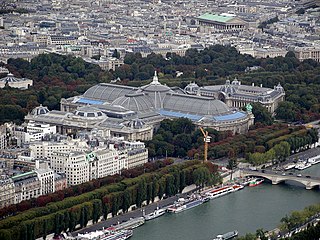 W
WThe Grand Palais des Champs-Élysées, commonly known as the Grand Palais, is a large historic site, exhibition hall and museum complex located at the Champs-Élysées in the 8th arrondissement of Paris, France. Construction of the Grand Palais began in 1897 following the demolition of the Palais de l'Industrie as part of the preparation works for the Universal Exposition of 1900, which also included the creation of the adjacent Petit Palais and Pont Alexandre III. It has been listed since 2000 as a monument historique by the French Ministry of Culture.
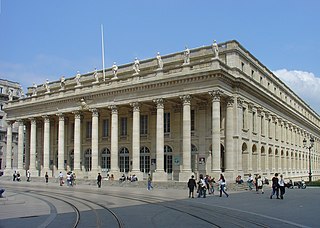 W
WThe Grand Théâtre de Bordeaux is an opera house in Bordeaux, France, first inaugurated on 17 April 1780. It was in this theatre that the ballet La fille mal gardée premiered in 1789, and where a young Marius Petipa staged some of his first ballets.
 W
WThe Château de Gudanes is an 18th-century neoclassical château in the commune of Château-Verdun, in the southern French department of Ariège. It is built on the site of an older castle destroyed in 1580. The château has been a designated monument historique since 1994, but fell into ruin in the late 20th century. It was purchased in 2013 and is currently being restored.
 W
WNotre-Dame is a Neoclassical Catholic parish church in the town of Guebwiller, in the Haut-Rhin department of France. The church is classified as a monument historique by the French Ministry of Culture since 1841. The building is remarkable for its size and for the quality of its decoration; it is considered as the most important Neoclassical church in Alsace, and as an outstanding and most sumptuous example of early Neoclassical architecture.
 W
WFrançois Le Vau was a French Late Baroque and Neoclassical architect.
 W
WClaude-Nicolas Ledoux was one of the earliest exponents of French Neoclassical architecture. He used his knowledge of architectural theory to design not only domestic architecture but also town planning; as a consequence of his visionary plan for the Ideal City of Chaux, he became known as a utopian. His greatest works were funded by the French monarchy and came to be perceived as symbols of the Ancien Régime rather than Utopia. The French Revolution hampered his career; much of his work was destroyed in the nineteenth century. In 1804, he published a collection of his designs under the title L'Architecture considérée sous le rapport de l'art, des mœurs et de la législation. In this book he took the opportunity of revising his earlier designs, making them more rigorously neoclassical and up to date. This revision has distorted an accurate assessment of his role in the evolution of Neoclassical architecture. His most ambitious work was the uncompleted Royal Saltworks at Arc-et-Senans, an idealistic and visionary town showing many examples of architecture parlante. Conversely his works and commissions also included the more mundane and everyday architecture such as approximately sixty elaborate tollgates around Paris in the Wall of the General Tax Farm.
 W
WThe Château de Voisins is a neoclassical mansion located in Louveciennes, in the department of Yvelines, France. It is 8 kilometres north of Versailles, and 20 kilometres east from the centre of Paris.
 W
WThe Marseille Courthouse is a neoclassical building located on Place Montyon, in the 6th arrondissement of Marseille, France.
 W
WThe Maison carrée d'Arlac is a neoclassical folly building constructed between 1785 and 1789, in the town of Mérignac just outside Bordeaux, France. It was built for Bordeaux banker Charles Peixotto.
 W
WThe Meuse-Argonne American Cemetery is a 130.5-acre (52.8 ha) World War I cemetery in France. It is located east of the village of Romagne-sous-Montfaucon in Meuse. The cemetery contains the largest number of American military dead in Europe (14,246), most of whom lost their lives during the Meuse-Argonne Offensive and were buried there. The cemetery consists of eight sections behind a large central reflection pool. Beyond the grave sections is a chapel which is decorated with stained glass windows depicting American units' insignias. Along the walls of the chapel area are the tablets of the missing which include the names of those soldiers who fought in the region and in northern Russia, but have no known grave. It also includes the Meuse-Argonne American Memorial. This cemetery is maintained by the American Battle Monuments Commission. It is open daily to the public from 9:00 a.m. to 5:00 p.m. The cemetery is closed January 1 and December 25, but is open on all other holidays.
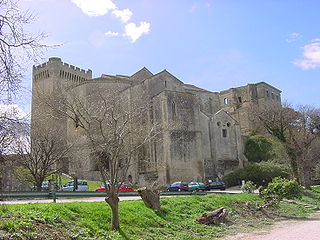 W
WMontmajour Abbey, formally the Abbey of St. Peter in Montmajour, was a fortified Benedictine monastery built between the 10th and 18th centuries on what was originally an island five kilometers north of Arles, in what is now the Bouches-du-Rhône Department, in the region of Provence in the south of France.
 W
WPierre-Louis Moreau-Desproux was a pioneering French neoclassical architect.
 W
WÉglise Saint-Pierre-et-Saint-Paul is the Catholic parish church of the village of Neuwiller-lès-Saverne, in the Bas-Rhin department of France.
 W
WThe Église Notre-Dame-du-Mont is a Roman Catholic church in Marseille.
 W
WThe Opéra de Marseille, known today as the Opéra Municipal, is an opera company located in Marseille, France. In 1685, the city was the second in France after Bordeaux to have an opera house which was erected on a tennis court.
 W
WThe Opéra Nouvel in Lyon, France is the home of the Opéra National de Lyon. The original opera house was re-designed by the distinguished French architect, Jean Nouvel between 1985 and 1993 in association with the agency of scenography dUCKS scéno and the acoustician Peutz. Serge Dorny was appointed general director in 2003.
 W
WThe Palace of Justice of Aix-en-Provence is a listed historical building in Aix-en-Provence, Bouches-du-Rhône, France.
 W
WThe Palais de la Bourse is a building on place du Commerce in Nantes, France, begun at the end of the 18th century and completed in the 19th century. It was rebuilt at the end of the 20th century to house a branch of Fnac.
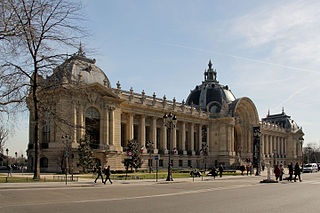 W
WThe Petit Palais is an art museum in the 8th arrondissement of Paris, France.
 W
WThe Château de Rastignac is a neoclassical style country house located in La Bachellerie, near Bordeaux in the Dordogne in France. It was built between 1789 and 1817 to designs by the architect Mathurin Salat (1755–1822), sometimes called "Blanchard". The house was built of limestone by the Marquis de Rastignac.
 W
WRennes Cathedral is a Roman Catholic church located in the town of Rennes, France. It has been a monument historique since 1906.
 W
WSaint-Jean-de-Maurienne Cathedral is a church in Saint-Jean-de-Maurienne, Savoie, that is one of two co-cathedrals of the Roman Catholic Archdiocese of Chambéry–Saint-Jean-de-Maurienne–Tarentaise. Until 1966, it was the cathedral of the Diocese of Saint-Jean-de-Maurienne. It is dedicated to John the Baptist.
 W
WRohan Castle, also known as Château Neuf, is an eighteenth-century neoclassical palace in the city of Saverne in Alsace, France. It was one of the residences of Archbishops of Strasbourg, rulers of the Prince-Bishopric of Strasbourg, which was an ecclesiastical principality of the Holy Roman Empire from the 13th century until 1803. A series of members of the House of Rohan held the see in the 18th century. The 140 metre wide façade of red Vosges sandstone is considered to be one of the most impressive examples of its kind.
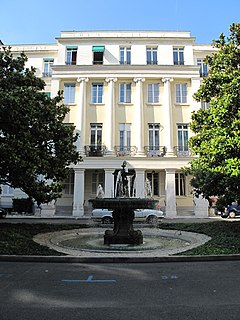 W
WThe Square d'Orléans, is a residential square in the 9th arrondissement of Paris, at 80, rue Taitbout.
 W
WThe Strasbourg Opera House, located on Place Broglie on the Grande Île in the city center of Strasbourg, in the French department of the Bas-Rhin, is the main seat and mother house of the opera company Opéra national du Rhin. It has been classified as a Monument historique since 1921.
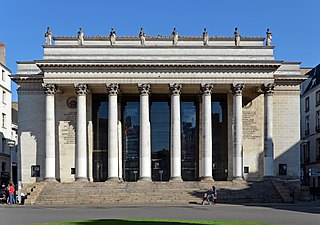 W
WThéâtre Graslin is a theatre and opera house in the city of Nantes, France, built in a new district of the city in the late 18th century by the local architect Mathurin Crucy, and named after the owner of the land, Jean-Louis Graslin. Constructed in the Italian style, the auditorium holds 823 people.